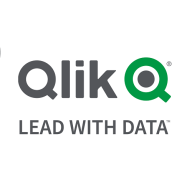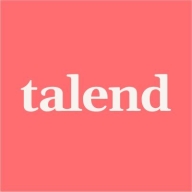

Qlik Replicate and Talend Data Fabric compete in the data integration space, with Qlik Replicate being favored for its pricing and effective support. However, Talend Data Fabric is considered a superior choice due to its comprehensive features that justify its cost.
Features: Qlik Replicate is effective in real-time change data capture (CDC) and has a user-friendly interface. It provides extensive data manipulation and transformation capabilities. Additionally, its ability to handle diverse data management tasks and replicate data from various sources is impressive. Talend Data Fabric offers a rich feature set with advanced data quality tools and transformation capabilities. It supports multiple cloud environments and open-source components for customization. The flexibility in managing complex data processes makes Talend an excellent choice for enterprises.
Room for Improvement: Qlik Replicate could improve its AI capabilities and expand its data processing functions to better support advanced analytics. Integration with modern AI tools would enhance its overall usability. A more robust error-handling mechanism would also be beneficial. Talend Data Fabric could benefit from a more intuitive user interface to lower the learning curve for new users. Updating the performance efficiency for large datasets and enhancing integration with third-party tools would also be advantageous to users seeking seamless operations. Increasing connectivity options could make it even more versatile.
Ease of Deployment and Customer Service: Talend Data Fabric offers flexibility through its cloud and on-premise deployment models, along with robust customer service to support integrations. Qlik Replicate provides a straightforward deployment experience with a reliable support team, especially in managing real-time data streaming scenarios.
Pricing and ROI: Qlik Replicate is noted for competitive pricing and quick ROI, making it attractive for cost-sensitive organizations. Its setup costs are favorable for businesses focused on immediate savings. Talend Data Fabric, while requiring a higher initial investment, promises substantial ROI by accommodating comprehensive data management needs, appealing to enterprises prioritizing long-term value.


Qlik Replicate is a data replication solution for replicating data from one source database to another for business intelligence software. It offers data manipulation and transformations, replication without impacting source databases, and ease of use without needing ETL. The solution is stable and user-friendly, with detailed logging and support.
Qlik Replicate has improved the organization by allowing each team to replicate their data into a single-source data location. The most important feature of Qlik Replicate is its ability to replicate and update records without needing a programmer.
Talend, a leader in cloud data integration and data integrity, enables companies to transform by delivering trusted data at the speed of business.
Talend Data Fabric offers a single suite of apps that shorten the time to trusted data. Users can collect data across systems; govern it to ensure proper use, transform it into new formats and improve quality, and share it with internal and external stakeholders.
Over 3,000 global enterprise customers have chosen Talend to help them turn all their raw data into trusted data to make business decisions with confidence — including GE, HP Inc., and Domino’s.
We monitor all Data Integration reviews to prevent fraudulent reviews and keep review quality high. We do not post reviews by company employees or direct competitors. We validate each review for authenticity via cross-reference with LinkedIn, and personal follow-up with the reviewer when necessary.